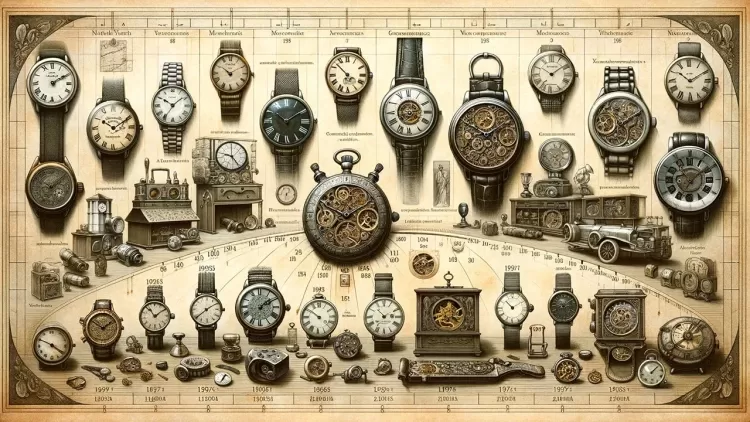
The history of watches begins in 16th-century Europe, evolving from portable spring-driven clocks of the 15th century. Early timepieces, often called pocket watches, were initially worn as pendants and later carried in pockets. The Swiss watch industry emerged in the mid-1500s, and pocket watches became a fashionable staple. The development of the wristwatch followed, initially for women, and later gaining traction among men for practical purposes, especially during wartime. [1, 2, 3, 4, 5, 6, 7, 8, 9]
Early Origins (15th-16th Centuries): [1, 2]
- Portable Clocks: The history of watches begins with the development of portable spring-driven clocks in the 15th century. [1, 2, 3]
- Early Watches: In the 16th century, the first watches, often oval-shaped and called “Nuremberg eggs,” emerged, primarily in German cities like Nuremberg and Augsburg. [2, 5]
- Peter Henlein of Nuremberg: He is often credited with the invention of the watch, although others were also creating miniature timepieces during this period. [2, 5]
- Neck Pendants: These early timepieces were often worn around the neck as pendants. [4, 10]
Pocket Watch Era (17th-18th Centuries): [4, 7]
- Pocket Watches: The emergence of pocket watches in the 17th century marked a significant shift in timekeeping. [4, 7]
- Fashionable Items: Pocket watches became fashionable and status symbols, particularly for men. [4, 7]
- Swiss Watch Industry: The Swiss watch industry played a crucial role in the development of pocket watches, with innovations in materials and design. [6]
Wristwatch Evolution (19th-20th Centuries): [3, 8]
- Early Wristwatches: The first wristwatches were designed for women, often adorned with jewelry. [3, 8]
- Practicality and Wartime Demand: Wristwatches gained popularity for practical reasons, especially during wartime when men needed to check the time without reaching into their pockets. [3, 9]
- Mass Production: The mass production of watches, including wristwatches, began in the 1840s in the United States. [3, 11]
Modern Era: [1]
- Continued Innovation: The watch industry continues to innovate, developing complex mechanisms, materials, and designs. [1]
- Wristwatches as Style Icons: Wristwatches have evolved into a fashion statement and a symbol of status. [7]
- Smartwatches: The advent of smartwatches has further diversified the landscape of timekeeping and timekeeping devices. [1]

Watch Knowledge Sources
[1] https://en.wikipedia.org/wiki/History_of_watches
[2] https://en.wikipedia.org/wiki/Watch
[3] https://www.bremont.com/blogs/blogbook/mens-watches-history
[4] https://www.hwljewelers.com/journals/the-history-of-watches
[5] https://rubberb.com/blog/15-milestones-in-history-of-the-watchmaking/
[6] https://www.the1916company.com/blog/invention-of-the-wristwatch.html
[7] https://www.watchswiss.com/perpetual/history-of-time/
[8] https://www.swisswatchexpo.com/thewatchclub/2023/02/07/the-invention-of-the-wristwatch/
[9] https://www.shinola.com/our-stories/history-of-the-modern-wrist-watch/
[10] https://www.britannica.com/technology/watch
[11] https://vero-watch.com/blogs/recent_posts/history-of-watches
Find Your Historical Timepiece
Mechanical,Quartz,Digitial and Smart Watches

